Pipe and Cable LOCATOR Technology
What is a Pipe and Cable Locator?
The pipe and cable locator is the primary tool that we use to locate underground utility lines. These units consist of two main parts, a transmitter, and a hand held receiver. The transmitter outputs a frequency selected by the operator that induces onto nearby pipes and cables. The receiver is used to detect these radio frequencies, allowing our utility locate technicians to accurately locate and trace all underground utility lines.
Underground utility locating requires the use of a few different methods in order to accurately mark buried lines
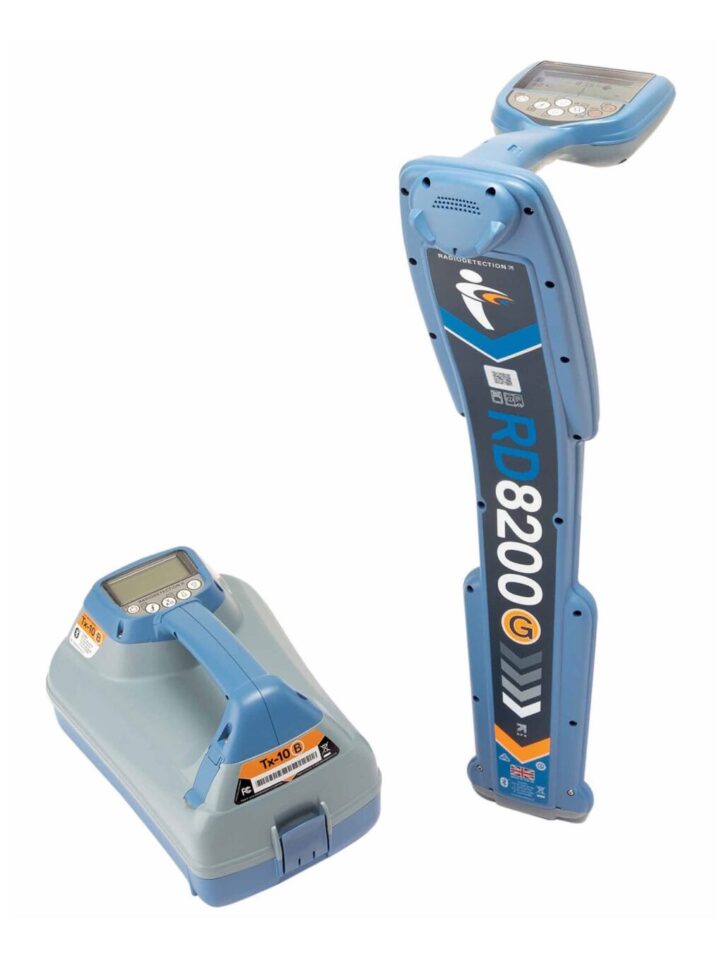
Our underground utility locate technicians are equipped with top of the line Radiodetection RD8200G receivers and TX10B transmitters, the industry standard pipe and cable locator.
Pipe and Cable Locator Application Methods
Direct Connection (Conduction)
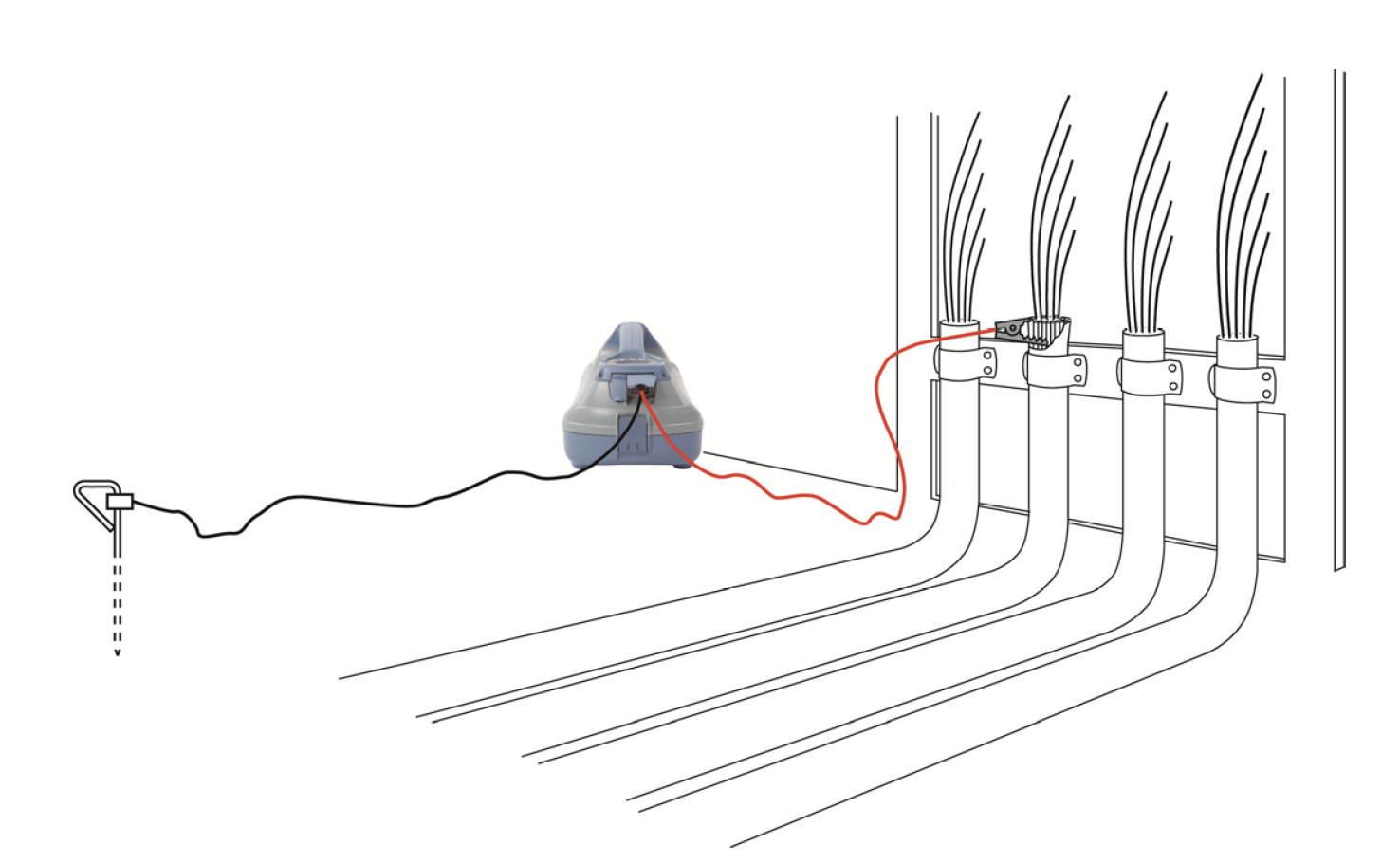
Direct Connection is the preferred method for locating metallic utility lines. It is the most accurate method providing the most options for the technician locating a buried utility line.
- The transmitter is placed next to an access point for the target line being traced (typically a valve, utility box, utility vault, or other point where direct contact with line can be made). A connection lead from the transmitter is connected to the target line and a second lead is connected to ground.
- The transmitter is adjusted for frequency and power output to match the properties of the target line being traced, surrounding soil and other utilities nearby. Application of the correct frequency is essential to prevent electromagnetic coupling or bleed off to other metallic utilities or objects.
- The receiver is then set to the same frequency as the transmitter, gain control adjusted accordingly, and the signal which is sent from the transmitter through the target line is traced and marked on the surface.

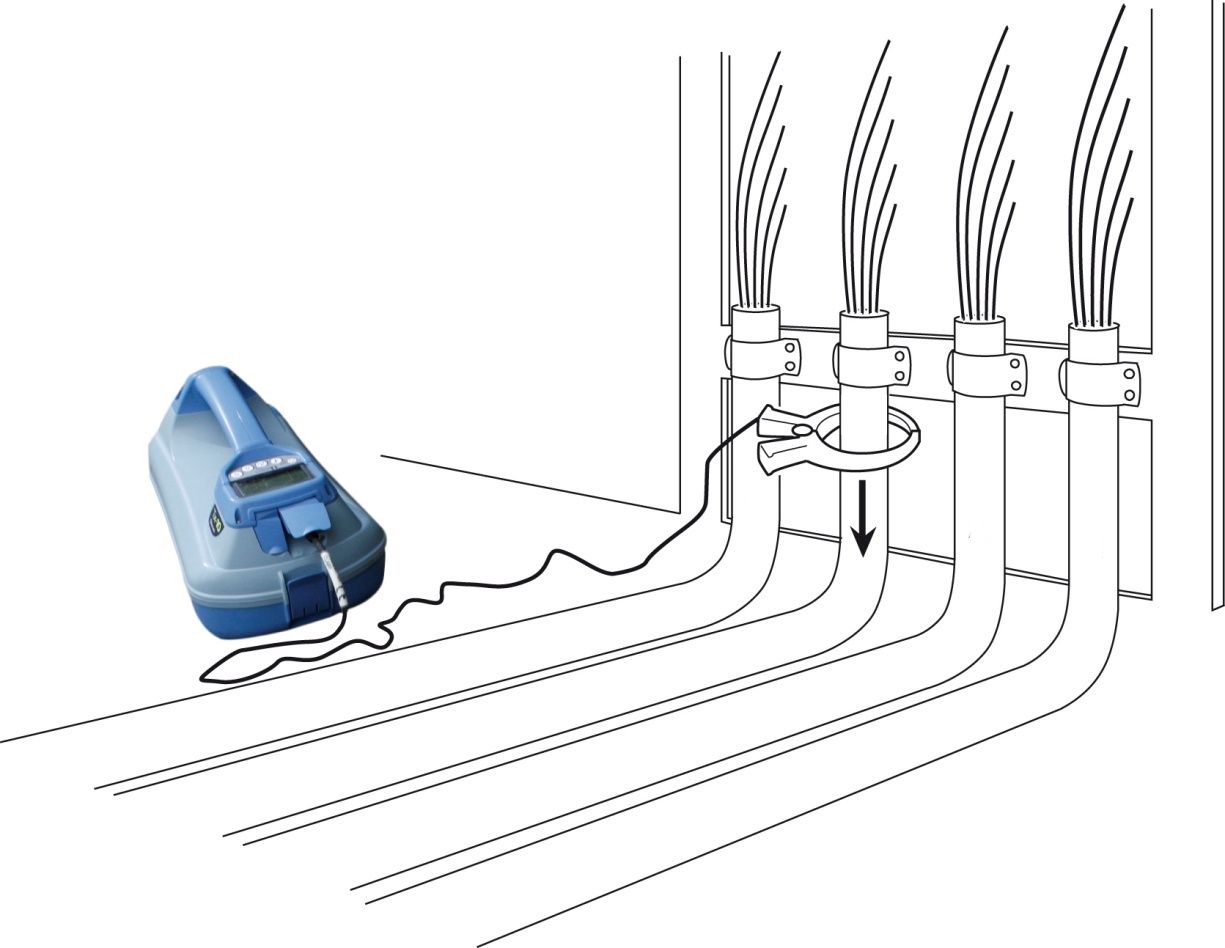
Ring Clamp (Induction)

Ring Clamp Induction is used to induce a signal onto a metallic cable or conduit where direct connection is not an option.
- A ring clamp is connected to the transmitter in place of connection leads and then clamped around desired metallic pipe or cable. Signal travels from transmitter to a coil within the clamp and onto the target line.
- The receiver is set to the same frequency as the transmitter as with direct connection and the target line is traced and marked on the surface.
Induction
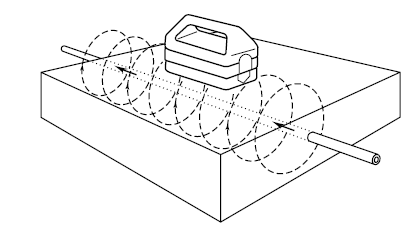
Induction is used when there is no surface access to the target line. Induction is the least desirable method of locating due to the massive amount of electromagnetic coupling, or bleed off that is created. Induction method, when used properly is an invaluable locate method.
- The transmitter is placed on the surface, and over the point where the target line is thought to run.
- Once the target line is located, it is then traced with the receiver using the same method as direct connection.
- This method can also be used to perform an inductive search to locate unknown or abandoned lines.

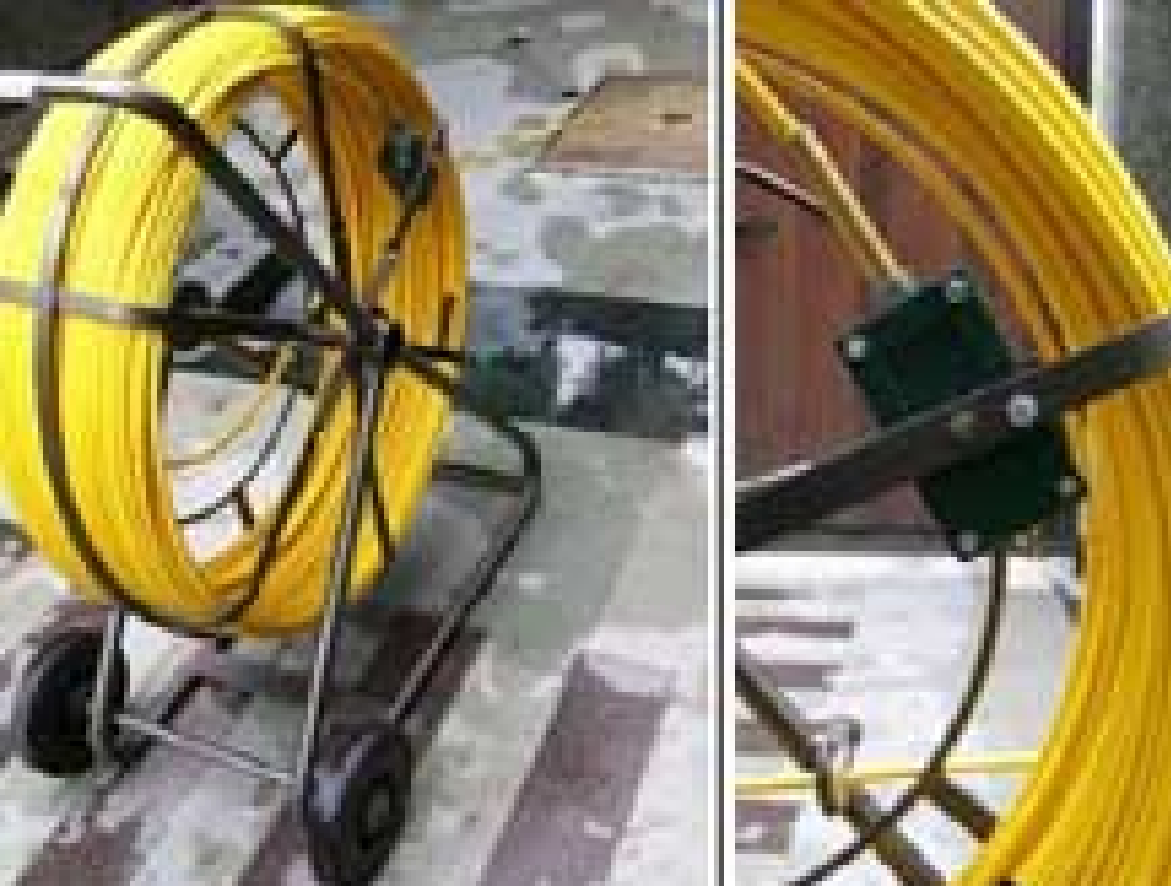
Duct Rodding

A Duct Rod is a flexible, detectable line that is pushed into drains, conduits and sewer lines which carries a signal from the transmitter using the direct connection method. The duct rod can be used together with a sonde attached to it.
- The sonde is pushed or pulled through the pipe, conduit or sewer line with a duct rod and then traced using the direct connection method.
Sonde Locating
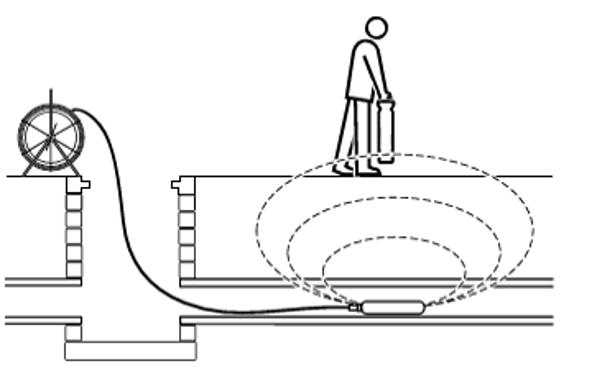
A locating sonde is used when there is surface access to a buried pipe, but the pipe is non-metallic and not capable of carrying an EM signal. The sonde is a beacon that radiates it’s own set frequency which can be traced by a receiver. Applications include empty conduits, drain and sewer lines.

Pipe and Cable Locator Technology
To schedule a utility locate survey, or to learn more about how our services can assist on your project, give us a call or send us an email. We currently serve CT, NY, MA and RI.
Call Us
Send Mail
